A Study Room in the Desert
Crafting experiences to stimulate engagement with a library of printed books.
Including excerpts of stories from the Dust & Shadow Study Room at the ASU Hayden Library, with reflections from The Future of Print by librarian Emily Pattni.
A study room, an immersive installation, and an alternate reality narrative, nested in the consensus reality of a university library. Dust & Shadow Salon is a portal into a parallel present or a possible future of the Institute for Desert Studies, exploring relationships between people and the desert.
The story can be pieced together from hints and fragments, scattered through books, objects, and media. Hinting at the mythical and experiential underpinnings of contemporary life in the desert, the room invites emotional engagement with abstract concepts — desertification, climate weirding and desert attunement. A proposition for the re-alignment of urban and desert ecosystems.
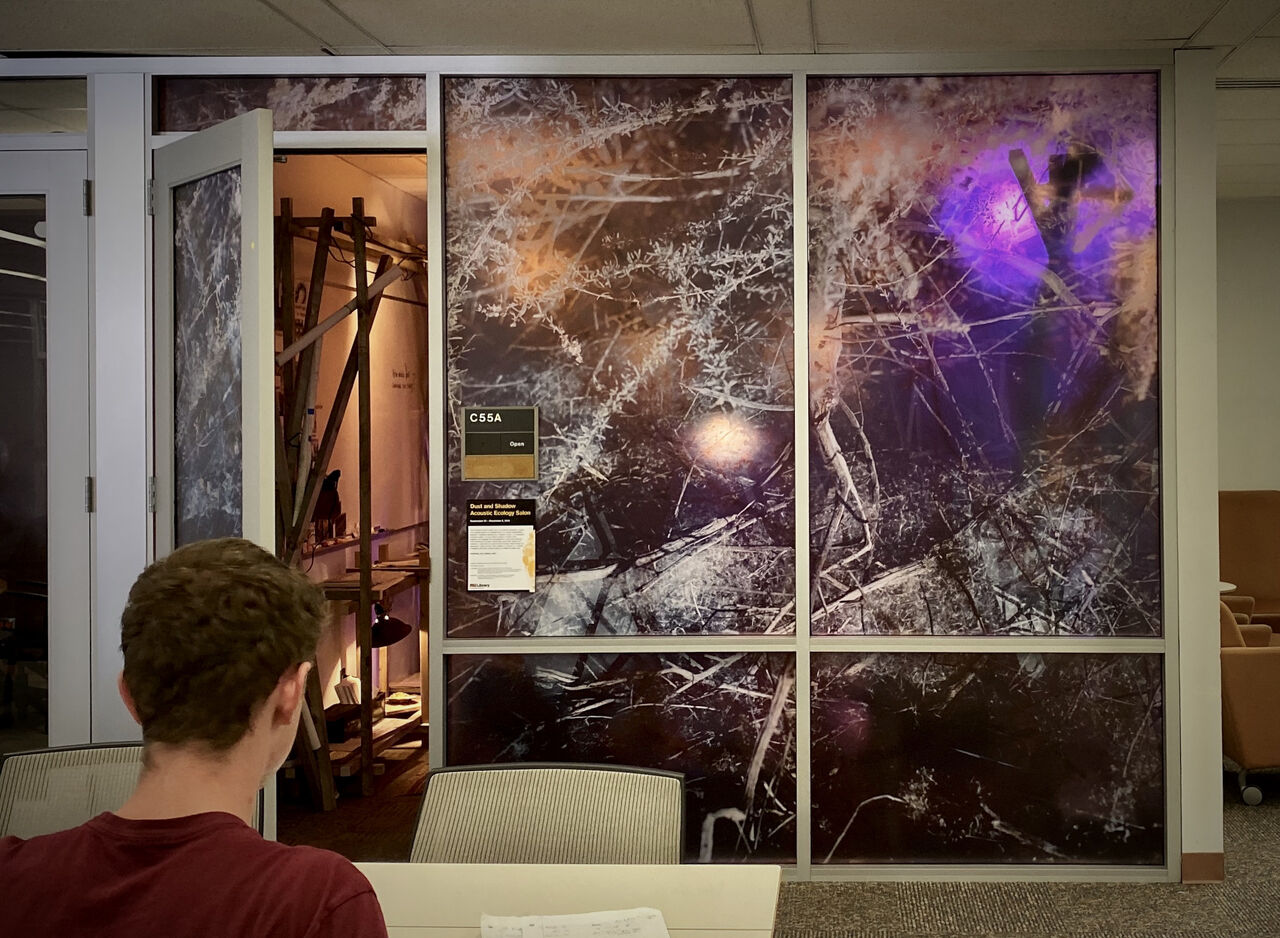
Above ground, the temperature approaches 105°F/40°C. A student of Desert Studies (DS) walks slowly across the sun-drenched concrete of the Orange Mall. Slithering in slow-motion between the few scarce bits of shade, they descend the wide staircase to the lower level, seeking refuge in the cool, dark library hall, where they booked a few hours in one of the DS study rooms. They flick their badge at the reception scanner without stopping. A faintly glowing arrow appears on the tiles under their feet, nudging them deeper into the dimly lit cavern of the desert archives. Down another staircase, they open the door of the Desert Salon.
An opportunity to bring our communities into the Library space to learn about an important research topic, think critically about their own experiences, and engage with library resources.
Emily Pattni
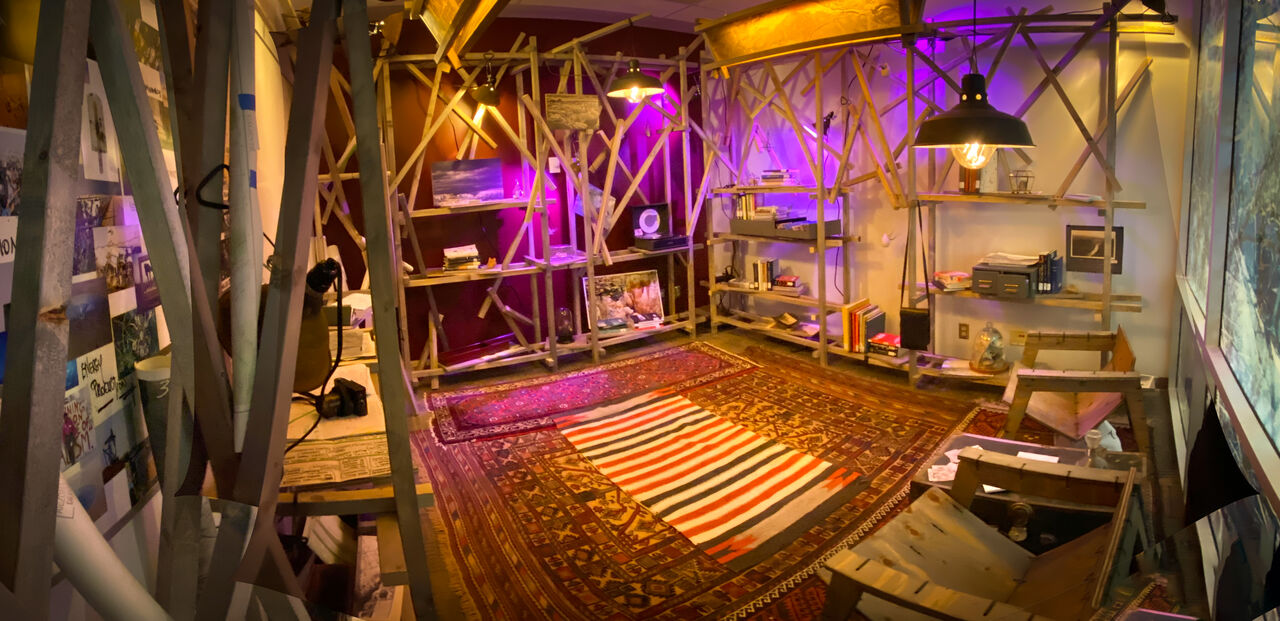 Shapeshifting between a misplaced listening bar, a forgotten lounge, and a panpsychic resonance station. An exploded publication.
Shapeshifting between a misplaced listening bar, a forgotten lounge, and a panpsychic resonance station. An exploded publication.
A disembodied voice invites them to enter, to explore, to piece together their story together. A story about attuning to the rhythms of the desert. A story that can only be known through material traces, sound, light, objects, ambience, and speculation.
We added science fiction, critical texts, memoirs, and photography books in the space inspired from their list of research influences. These books were placed throughout the room, amongst the wooden beams and artifacts. In this way, we were able to feature print books in a fully-immersive sensory experience to encourage discovery, learning, and engagement.
Emily Pattni
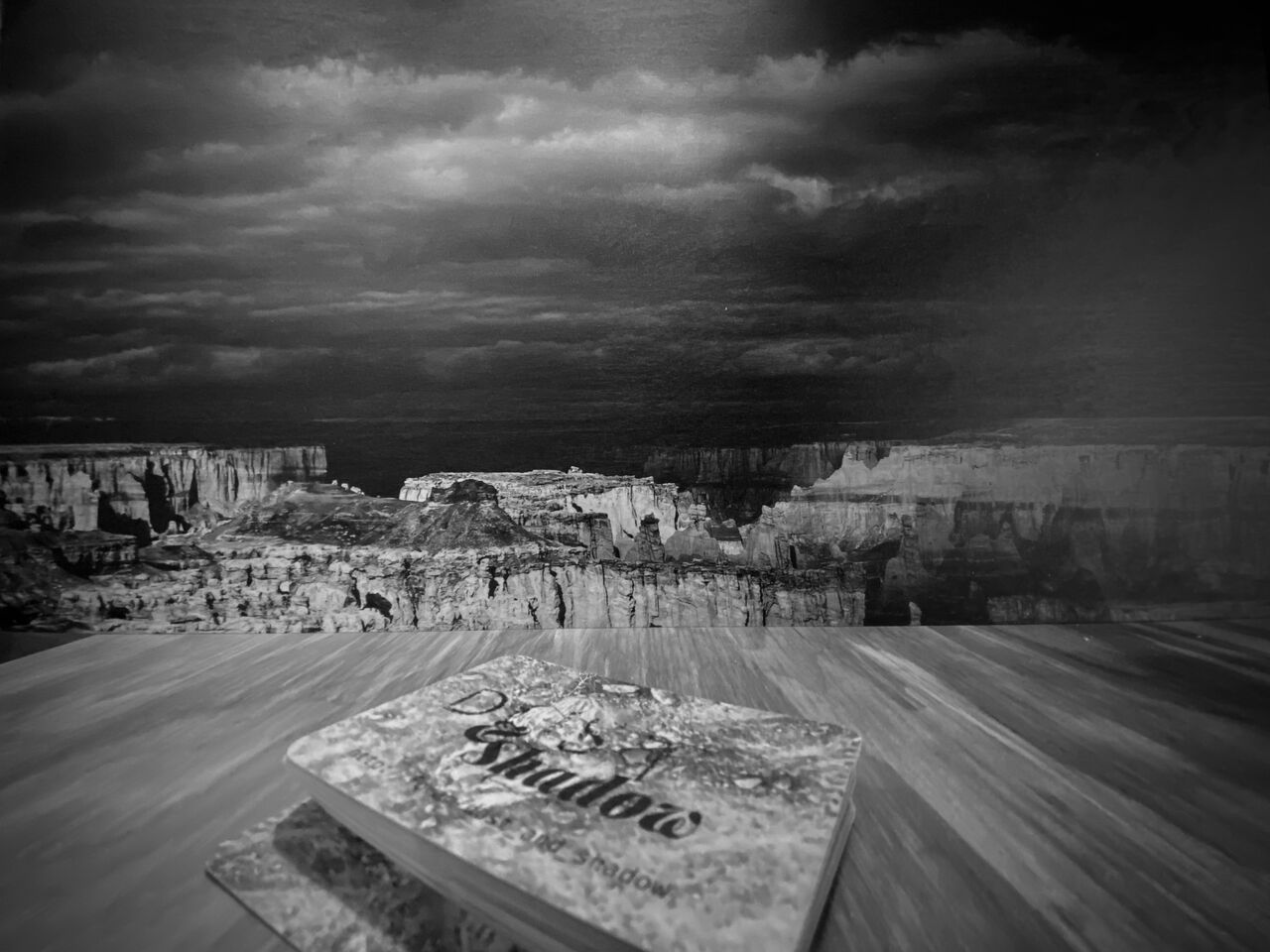
They listen, browse, read, meditate. In company or in solitude.

In solidarity with those unheard others with whom they inhabit the desert.
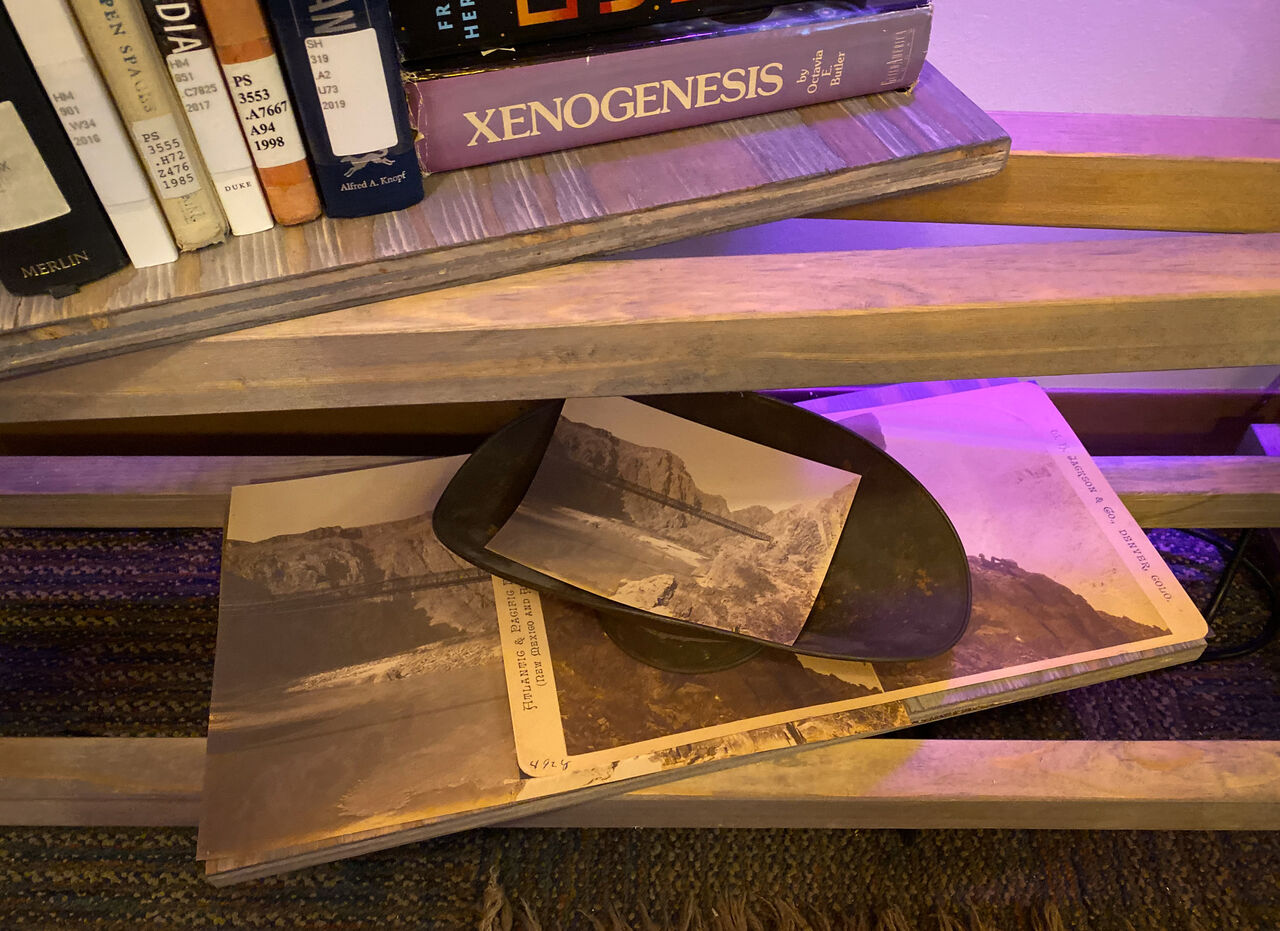
The design is intimate and contemplative, inviting deceleration, solidarity (with humans and other-than-humans), appreciation, care, elation, and relief, while maintaining that sense of irreverence and resistance.
Students and staff responded with curiosity and wonder.
Emily Pattny

The book list features authors like Ofelia Zepeda, Charles Stross, and China Miéville.
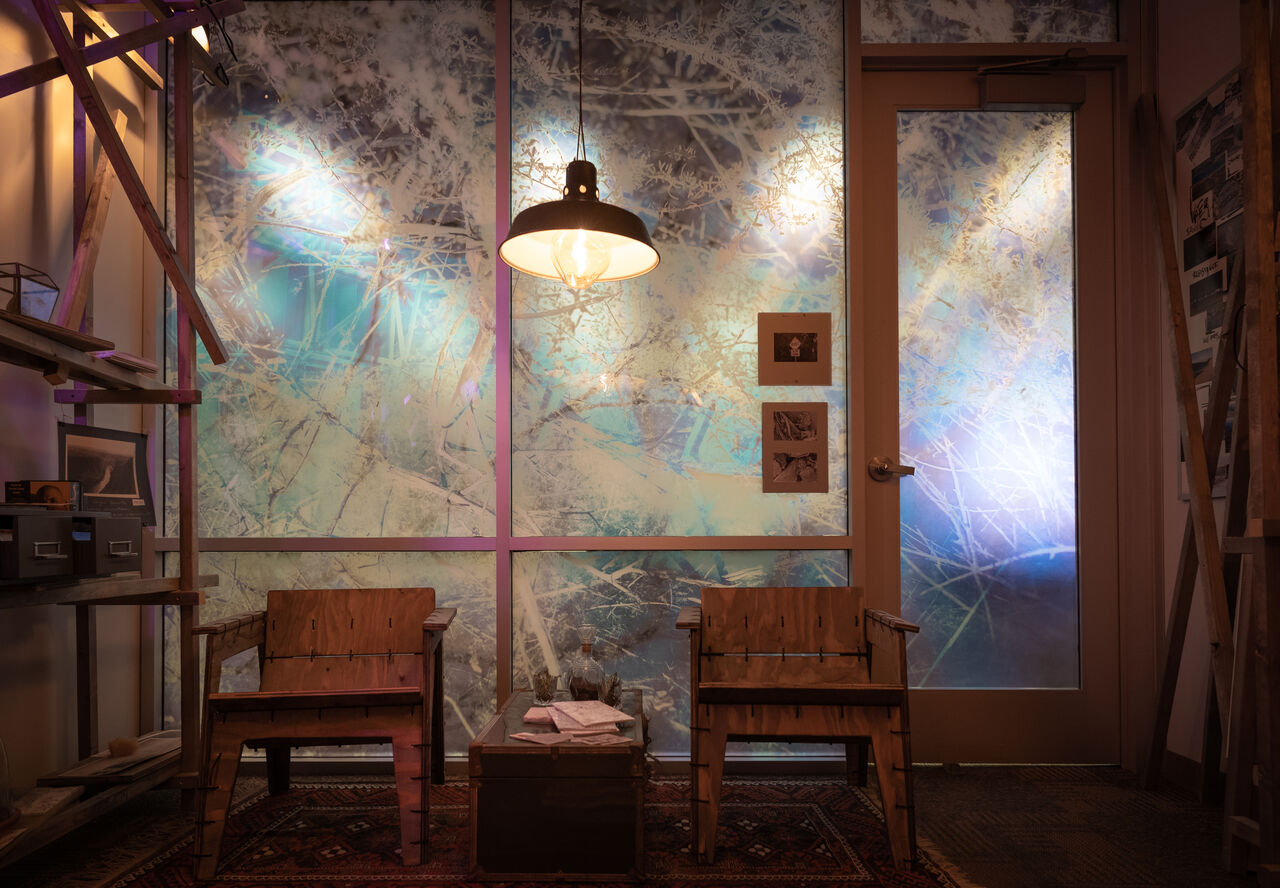
The Institute for Desert Studies is a monastic entity for rethinking time, re-attuning the urban clock to the rhythms of the desert. It is a place where occult sciences, fictocriticism, coven studies, and dust theory are common fields of study.
We learned new strategies to designing print collections using space, senses, and art to engage users. Additionally, these books have been a great addition to our collection beyond the project dates, because they continue to circulate and have been used for other projects. The relationships formed in this project have reinforced the Library’s value for researchers, and have fostered conversations around how we can continue to design learning experiences that invoke curiosity and interest.
Emily Pattny
I understood something about the tactility and enlivening qualities of sound better than ever before: Sound can be a three-dimensional space in which to put your body, and in which your body may be acted upon and opened up, even when you are sitting still. I seemed to understand the physics of it: tones as standing waves, and me in the middle of them, one of them. Or, if you prefer the language of another sense, it was like seeing colors after knowing only grays.Ben Ratliff, Learning to Listen in a Los Angeles Cafe Built for Vinyl
References & further reading
🝓